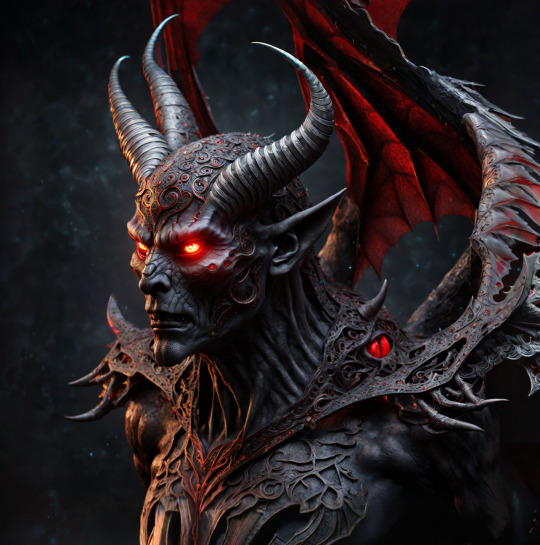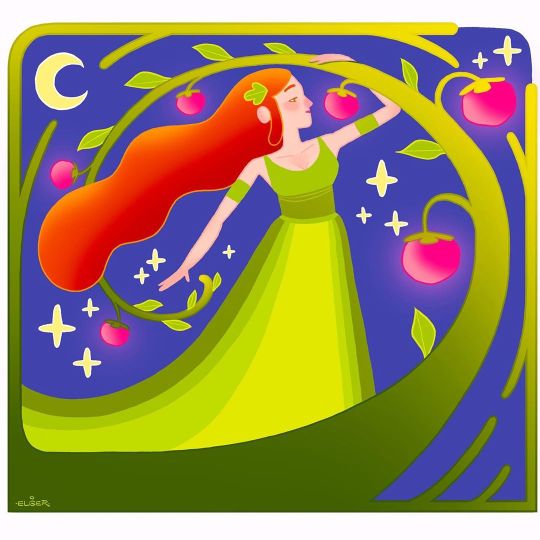#AncientBeliefs
Text

The Haunting World of Skinwalkers: Legends, Lore, and Nightmares
In the heart of Navajo folklore lies a creature so terrifying, so shrouded in mystery, that even mentioning its name is said to bring bad luck. Skinwalkers, or "yee naaldlooshii," are shape-shifting entities capable of transforming into animals and mimicking voices. These beings walk the line between reality and nightmare, instilling fear into anyone who dares to cross their path. Read on...
#ancientbeliefs#gothictales#gothichorror#darktales#SkinwalkerLegends#NavajoFolklore#ShapeShiftingCreatures#SupernaturalHorror#SkinwalkerStories#GothandGhoul
0 notes
Text
Megalithic Constructions

In the final phase of the Neolithic and the subsequent Eneolithic period, a remarkable development of megalithic constructions emerged, a term derived from the Greek ("mégas" for large and "lithòs" for stone). These imposing structures, largely dedicated to worship and collective burials, bear witness to the ingenuity and spirituality of ancient civilizations.
Menhir: Towering Monuments of Symbolic Meaning
Menhirs, derived from Breton ("men" for stone and "hir" for long), are tall monoliths driven into the ground, often marking burial sites. Their height, ranging from 2-3 meters to 6 meters, can reach extraordinary peaks, as highlighted by the Breton menhirs of Kerloas and Locmariaquer. These monoliths can be isolated or arranged in straight or circular alignments, often oriented in precise astronomical directions. In Carnac, Brittany, a complex of about 3000 menhirs extends in parallel rows, oriented westward, creating a captivating panorama over a kilometer long.
Dolmen: Innovative Trilithic System in Funerary Architecture
The dolmen, derived from Breton ("doul" or "tol" for table and "men" for stone), constitutes a form of funerary architecture. Composed of two or more stone blocks driven into the ground, surmounted by a horizontal slab, this trilithic construction system represents mankind's first use in this regard. The dolmen, primarily sepulchral, can be an individual or collective tomb, often characterized by an access corridor. Initially covered by stone or earth tumuli, the oldest dolmens in Italy are found in Sardinia, Apulia, and the Alpine region for the Copper Age.
Cromlech: Concentric Monuments of Astronomical Significance
Cromlechs, derived from Breton ("crom" for round and "lech" for stone), represent the monumental application of the trilithic system. These consist of series of dolmens arranged in concentric circular figures. Widespread in Neolithic and Eneolithic Europe, cromlechs originally served to define the lunar cycle, later adapting to indicate the movement of the Sun and the progression of seasons. In addition to their practical utility, these sites were spaces for collective ceremonies, including funeral, agricultural, and fertility rites.
Allée Couverte: Collective Funerary Constructions in France
Another application of the dolmen, particularly common in France, is the Allée couverte ("covered alley"). These collective funerary constructions are composed of stone slabs supported by vertical structures or dry-stone walls, sometimes reaching considerable dimensions. A notable example is the Allée couverte du Mougau, erected between the end of the Neolithic and the beginning of the Eneolithic, which stands out for the presence of engravings. The structure, 14 meters long, has a north-south orientation, with a northern entrance and a chamber at the southern end, likely preceded by a vestibule.
In Conclusion
Megalithic constructions bear witness to the rich cultural and religious landscape of ancient civilizations, offering a detailed look into how these communities conceived the world and the divine.
#MegalithicWonders#AncientArchitecture#SpiritualHeritage#NeolithicCultures#HistoricalMonuments#ArchaeologicalMarvels#CulturalSignificance#AncientCivilizations#CeremonialSites#HistoricalSpirituality#StoneAgeWonders#EneolithicHeritage#CulturalExploration#NeolithicArtifacts#ArchitecturalInnovation#CulturalHeritage#AncientWisdom#HistoricalDiscovery#SacredSites#AncientBeliefs
0 notes
Photo

Found thiz 💎 Gem &&& otherz awaiting the arrival of my other bookz 📚 from Amazon... #CantStopLearning✌🏾👋🏽🇲🇦 #donkilamamazon #CantTouchThisDonKilam #Million$$$WorthOfGame "Mythology of the American Nations"... #Godz #Heroes #Spirits #SacredPlaces #Rituals #AncientBeliefs #NorthAmericanIndian #Inuit #Aztec #Inca #Mayan #Nations #knowthyself #KnowMOORBeMOOR👣🇲🇦👑🏹🪶⚔🗡🛡👳🏾♀️⛰🕌🕍⛺⌛⏳🌠🌌🪐✨🗿⚱✌🏾🖐🏾 ... #Muurs #muchMoor2Life #muchmoorthanblack🇲🇦🇲🇦🇲🇦👈 (at Casablanca, Morocco) https://www.instagram.com/p/Cm-EdNVOOGQkIQASzoyU4OFxPWvQHnNIr7S1BU0/?igshid=NGJjMDIxMWI=
#cantstoplearning✌🏾👋🏽🇲🇦#donkilamamazon#canttouchthisdonkilam#million#godz#heroes#spirits#sacredplaces#rituals#ancientbeliefs#northamericanindian#inuit#aztec#inca#mayan#nations#knowthyself#knowmoorbemoor👣🇲🇦👑🏹🪶⚔🗡🛡👳🏾♀️⛰🕌🕍⛺⌛⏳🌠🌌🪐✨🗿⚱✌🏾🖐🏾#muurs#muchmoor2life#muchmoorthanblack🇲🇦🇲🇦🇲🇦👈
1 note
·
View note
Video
undefined
tumblr
Embark on a journey to uncover the secrets of Totemism with Monotheist in our latest video. Explore the cultural importance of totems and demystify the intriguing world of Totemism in simple terms. Whether you're new to the concept or looking for a clearer understanding, our video is here to make it easy for you. Subscribe to Monotheist for more videos simplifying spirituality and culture. Let's explore and learn together! 🌐✨ #Totemism #Monotheist #SimpleExplainer #AncientBeliefs #TotemismExplained #DiscoverMonotheist #trending #polytheism #monotheism #religions #religion #Explore
#sociology#society#tribal#totem#totemism#religion#society religion#sociology of religion#Mysteries of totemism#monotheism#monotheist#hank green#trending#viral#Totems Culture#religions#religions of the world#religion comparison#God#what is totem#crash course#the sun#sea god#Sun god#What is Totemism?#Mysteries of Totemism#Totemism Explained#What is Totemism? | Mysteries of Totemism | Totemism Explained
0 notes
Text
Someone Came Knocking - Slice Of Life Stories 🎧
🎧Slice Of Life Stories “Someone Came Knocking” #Podcast - The intensity of childhood friendships should never be underestimated.
youtube
#SomeoneCameKnocking #WideOpen #Intelligent #GreedyFellow #GoAbroad #AncientBelief #SoulsOfAncestors #MothersFault #IllBeBack #BirdFlewOff #MissedMyFriend #MyFriend #WroteLetters #SurpriseMe #TopStudent #GrownUpTogether #Scholarship #Promise #OutOfControl #StrangestThing #LookingForHer #DevastatingNews #DrunkDriver #Skidded #StrangestThing #KeptHerWord #LeftForever #LongTimeAgo #IFeedTheCrows
Music : @MarisVijay
Studio Recording : @trinitywaves2487
@SliceOfLifeStories - Written and Narrated by Tehnaz Bahadurji
For more story updates follow us @
Soundcloud : https://soundcloud.com/sliceoflifestories
Spotify : https://open.spotify.com/show/2Gina4RpRz6u3Qn9uYIKOp
iTunes :https://podcasts.apple.com/in/podcast/slice-of-life-stories/id1358225468?mt=2
Instagram : https://www.instagram.com/sliceoflifestories/?hl=en
Facebook : https://www.facebook.com/sliceoflifestories/
Twitter : https://twitter.com/sliceoflife466
Subscribe and Stay Tuned!
#English Podcast#Long Distance Friendship#Friendship Goal#Friends Forever#YouTube#Storytelling#Storyboard#Power Of Friendship#Growing Up Together#Losing a loved one#Healing From Loss#Shortstory#Podcast#Friendship Stories#Youtube
1 note
·
View note
Photo

AlchemyAstrology - ABCs
7 February 2020
Advantage: a good opportunity to look outside the box for new knowledge.
Balance: do something positive that you've always wanted to try.
Challenge: a desire to lose control and act destructively.
passive overall
http://www.lulu.com/spotlight/kcwilkerson
8 notes
·
View notes
Photo

The Ancient Romans believed the Aurora Borealis was the physical manifestation of Aurora, who was their Goddess of the Dawn. In old Norse mythology, the northern lights were said to be Bifrost, the bridge between Åsgard and Midgard. As part of my recent ceramic adventures, I've made porcelain teardrops and rustically hand painted with a Polar lights scene over a forest. I've turned them into earrings with salvaged lava beads you can anoint with aromatherapy oils and reclaimed iridescent reflective glass beads for added winter sparkle. Available in my Etsy shop. . . . #auroraborealis #northernlights #polarlight #wondersoftheworld #winterearrings #alternativechristmas #winterfashion #lavabeads #aromatherapyearrings #iridescent #potteryearrings #handpaintedpottery #ceramicart #ceramicartist #artjewellery #sustainablefashion #folklore #ancientbeliefs https://www.instagram.com/p/Ch9_QJWIVd0/?igshid=NGJjMDIxMWI=
#auroraborealis#northernlights#polarlight#wondersoftheworld#winterearrings#alternativechristmas#winterfashion#lavabeads#aromatherapyearrings#iridescent#potteryearrings#handpaintedpottery#ceramicart#ceramicartist#artjewellery#sustainablefashion#folklore#ancientbeliefs
1 note
·
View note
Photo

Places like this leave me awestruck. I learned the small hole in the ground of a kiva in these ancient cliff dwellings is called a sipapu and is like a vent connecting the underworld to the current world. It was uncovered during ceremonies so the ancestors could participate. That thoughtfulness gave me pause. They believed in community. Us, we, together. I’m glad these remains are protected so some of us can visit and reflect. . . #mesaverde #indigenous #ancientdwellings #ancientbeliefs #sipapu (at Long House At Mesa Verde National Park) https://www.instagram.com/p/CTM_ZE-HOP8/?utm_medium=tumblr
0 notes
Text

The Intriguing Role of Demons in Religious History
Demons. The very word evokes a sense of mystery, conjuring images of shadowy figures lurking in dark corners, whispering malevolent secrets. But these enigmatic beings are not just figments of imagination. They have a rich and diverse history, spanning from the ancient Mesopotamian myths to the modern manifestations in pop culture. Throughout this timeline, they were an integral part of daily life, and their presence was felt in numerous cultures' religious texts, folklore, and literature. The concept of demons has evolved, yet it remains a potent symbol of the unknown and the supernatural, a topic that continues to intrigue and fascinate.
The Concept of Demons in Ancient Religions
Mesopotamian Roots
In the cradle of civilization, Mesopotamia, demons were not just a part of the spiritual beliefs. They were integral to daily life. Known as 'Udug' or 'Utukku,' these entities were not just malevolent spirits thought to bring disease and misfortune but also a constant presence in the lives of the ancient Sumerians and Akkadians. They believed these demons could be appeased or warded off through rituals and offerings, a testament to their deep-rooted faith and respect for the spiritual realm. These beliefs were not mere superstitions but a way of life, a constant reminder of the delicate balance between good and evil in their world.
Egyptian Beliefs
The Egyptians also had a complex and multifaceted relationship with these otherworldly beings, called 'demons' or 'spirits.' Some, like Apophis, the serpent god who embodied chaos, were malevolent, while others, like the household gods Bes and Taweret, played protective roles. Egyptian mythology, a rich tapestry woven with tales of these spirits, stretches its influence across the mortal and divine realms. To fully immerse in the wonder of this mythology, a visit to Encyclopedia Britannica's article on Egyptian mythology is highly recommended, as it provides a comprehensive overview of these demon beliefs.
Sumerian Influence
The Sumerians were among the first to document their beliefs in a pantheon of gods and demons. These beings were seen as intermediaries between the gods and humans, capable of benevolence and wrath. The demon Pazuzu, for example, was believed to ward off other evil spirits despite being feared himself.
Evolution of Demons in Abrahamic Religions
Judaism
In Judaism, demons (or "shedim") evolved from earlier Near Eastern beliefs. They were seen as evil forces but were not given the same prominence as in later Abrahamic faiths. The figure of Satan, initially a "challenger" or accuser in the heavenly court, began to take shape as an adversary of God.
Christianity
Christianity's concept of demons was heavily influenced by Jewish apocryphal literature and Hellenistic beliefs. Demons became fallen angels, led by Lucifer in rebellion against God. The New Testament recounts numerous instances of demonic possession and exorcism, highlighting their malevolent influence on humanity.
Islam
In Islam, demons are known as "jinn," beings created from smokeless fire. While some jinn are harmless or even benevolent, others are considered wholly evil. Iblis (Satan) is a jinn who defied God's command and was cast out of heaven. The Quran provides various references to these beings and their interactions with humans. In Islam, it's intriguing to observe that devils and demons are perceived as psychological entities rather than supernatural beings.
Historical Perceptions and Influence of Demons
Historically, demons have been perceived as evil entities wielding significant influence over human affairs. Medieval Europe saw a surge in demonology studies, often linked to witch hunts and inquisitions. These entities were blamed for everything from personal misfortune to societal upheaval.
Contrasting Views of Demons in Eastern Religions
Buddhism
In Buddhism, demons (or "Mara") represent obstacles to enlightenment. Mara, the personification of temptation and death, sought to distract Siddhartha Gautama (the future Buddha) from his path to enlightenment. Unlike their Western counterparts, these demons are not inherently evil but are part of the cosmic balance.
Hinduism
Hindu mythology offers a diverse interpretation of demons (or "asuras"). While often depicted as antagonists to the gods (devas), some asuras are revered for their wisdom and devotion. They symbolize the duality of existence, embodying both destructive and nurturing forces. For further information, consult the Encyclopedia Britannica's overview of Hindu mythology.
Impact of Demons on Religious Texts, Folklore, and Literature
Demons have left an indelible mark on religious texts and folklore. The Bible, Quran, and other sacred texts contain numerous references to these entities, shaping cultural narratives and moral lessons. In literature, demons have been a source of fascination, from Dante's "Inferno" to Goethe's "Faust," depicting their complex relationship with humanity.
The Allure of the Unknown and the Supernatural
Why do demons continue to captivate our imagination? Perhaps it's our inherent curiosity about the unknown and the supernatural. Demons embody our fears and desires, metaphorically representing our struggles within ourselves and our societies. This fascination may stem from our internal conflict between making good and bad choices, making demons a powerful symbol of our psychological battles.
In popular culture, this allure is vividly evident. Movies like "The Exorcist" and "Hereditary" explore human vulnerability and morality through demonic manifestations. Books such as The Demonologist by Andrew Pyper delve into the profound effects of confronting one's inner demons. Video games like Diablo and Doom immerse players in worlds where the battle against demonic forces mirrors the struggle to overcome personal weaknesses and moral challenges. These narratives resonate deeply because they reflect our perpetual quest to understand and navigate the complexities of our inner lives.
Understanding the history of demons in religion offers a profound window into the human condition. These entities, embodying our deepest fears and hopes, reveal much about our collective psyche and cultural evolution.
But are demons real supernatural entities? Or do they symbolize our human struggles?
We invite you to join us in this enigmatic conversation. What captivates you most about the history of demons in religion? Share your thoughts and experiences with [email protected].
The resources shared here offer a gateway for further exploration into this dark and enigmatic realm. Explore the unknown and cultivate your curiosity—your next great discovery awaits in the shadows.
"The Encyclopedia of Demons and Demonology" by Rosemary Ellen Guiley
This comprehensive guide explores demons' history, folklore, and cultural significance in different religions and traditions.
"Demons: A Biblically Based Perspective" by Michael S. Heiser
An in-depth analysis of demons from a biblical viewpoint, examining their roles and representations within Christianity.
Encyclopedia Britannica
Offers extensive articles on demons in various religious contexts, including Judaism, Christianity, Islam, and Hinduism. These entries provide historical and theological overviews.
Oxford Reference Online
Provides access to authoritative reference works on religion and mythology, including detailed entries on demonic entities in different faiths.
"The Dictionary of Demons: Names of the Damned" by Michelle Belanger
A detailed reference that lists and describes demons mentioned in ancient texts, religious scriptures, and folklore.
"Islamic Beliefs and Practices" by Matt Stefon
Contains chapters dedicated to jinn and demons in Islamic theology, providing an insightful look into their roles and characteristics.
"Hindu Goddesses: Visions of the Divine Feminine in the Hindu Religious Tradition" by David Kinsley
Although focused on goddesses, this book provides context for understanding Hindu mythology's antagonistic forces and demonic figures.
The Catholic Encyclopedia
Available online, this resource offers detailed entries on the nature and history of demons as understood within Catholicism.
Journal Articles and Academic Publications
Databases like JSTOR and Google Scholar can be valuable for accessing peer-reviewed articles and academic papers on demonology in various religious traditions.
#GothandGhoul#Demons#DemonLore#MythAndReality#ReligiousHistory#HumanStruggles#DarkMythology#GothicTales#AncientBeliefs#MysticalEntities#OccultLore#UnveilingDemons#HistoricalDemons
0 notes
Photo

Enluminure ou carré de soie ?... Illumination or silk carré ? #illumination #enluminure #silkpainting #illustration #mothernature #nature #moonspirit #spirituality #pachamama #plant #nature #middleage #womanenergy #womanpower #forcetéllurique #ancientbeliefs #starchild #stars (à Quartier des Batignolles) https://www.instagram.com/p/B8brNEbK4wF/?igshid=wozx512cprhk
#illumination#enluminure#silkpainting#illustration#mothernature#nature#moonspirit#spirituality#pachamama#plant#middleage#womanenergy#womanpower#forcetéllurique#ancientbeliefs#starchild#stars
0 notes
Photo

To understand consciousness
is to know that civilization is complicated
and human development of wisdom is constant.
0 notes
Photo

Two custom interior transom windows in progress...The outstretched pelican... It was believed in pre Christian mythology that in times of deep famine, the pelican would, out of deep love for its young, peck at its our breast and feed its young. #swellcolors #pelicans #stainedglass #mythology #ancientbeliefs #whoknew #njartists #lbiartists (at SwellColors Glass Studio) https://www.instagram.com/p/Bv4TVcjDqCJ/?utm_source=ig_tumblr_share&igshid=1pjnxwhmz3r3p
0 notes
Photo

The legend holds that a coin thrown into the fountain will ensure a return to Rome.
#WeBuildTravel#TravelFacts#TravelDiaries#Traveler#Rome#Italy#Europe#TreviFountain#AncientBelief#TouristDestination
1 note
·
View note
Photo

AlchemyAstrology - ABCs
6 June 2021
Advantage: a good time to engage in a difficult endeavor, or socially heroic challenge.
Balance: if needed, remember to bring your mind back to positive emotions, good memories, or to what is go-in-on around you that you love.
Challenge: emotions feel like they're building pressure.
active over all
-----
The images I include don’t always relate to the reading, but
I hope they add something positive or interesting to your day.
-----
5 notes
·
View notes
Photo

There are many Yokai(a class of supernatural monsters) in Japanese folklore and mythology. And here’s one of them. According to Nihon Shoki and Kojiki(the two ancient texts about Japanese history), Yamata no Orochi is an 8-headed and 8-tailed giant serpent with bloody red eyes, loves liquors and forces people to give a young girl to it every year. One day, an old couple in Izumo Province were weeping. They had eight daughters before, and now only got the last one because the first seven had been eaten by Orochi. Luckily, a storm god called Susanoo came across them and offered help. When this serpent struck them again, it drank the liquor prepared by the old couple and passed out, then Susanoo killed it and found a legendary sword. Those myths have a great impact for one’s creativity. For example, some consider the character of Orochimaru in Naruto is originated from the legend of Yamata no Orochi. 日本神話妖怪特別多,其中一隻妖怪稱八歧大蛇。據《日本書紀》及《古事紀》記載,牠有八個頭、八條尾、鮮紅色眼睛,而且喜歡喝酒,每年都要吃掉一名少女。而牠出沒於出雲國,那裡有一對老夫婦本有八名女兒,首七位已經被吃掉,當只剩下最後一位的時候,遇到須佐之男(大神伊邪那歧之幼子),他自告奮勇。而大蛇再次出動的時候,喝了老夫婦先行準備的酒而醉倒,須佐在此時斬殺牠並發現「天叢雲劍」(草薙劍)。 這些神話可以啟發創作,例如有人認為《火影忍者》的大蛇丸便是以八歧大蛇作為原形。 #onespast #history #story #memory #heritage #myth #japanesemythology #yokai #yamatanoorochi #ancientbeliefs Image source: tumblr Data source: wiki, theStormMedia
0 notes
Text
Uniqueness
Uniqueness obliterated.Ancientstoriesbubbling up.Bubbling upfrom thedistantpast.Generationafter generationfor millenniastories pass.Beliefsystemspast forward.The archaicslidinginto thefuturethrough biology.Biologythe conduitof ancientthought,ancientbelief systems.Beliefs bornout offear.Bornout ofignorance,superstition.Beliefsdrilledgenerationaftergeneration.Little…
View On WordPress
0 notes